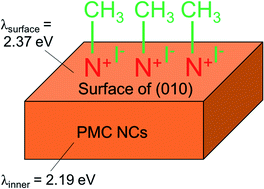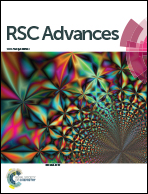Chemical modification utilizing a terminal structure exposed on the specific surface of polymer-metal complex nanocrystals†
Abstract
It has been difficult to selectively modify the surface of molecular crystals by chemical reactions because they usually have no reaction points on their surfaces. In this paper, focusing on the unique nanocrystal surface of the polymer metal complex (PMC) [{Cu2(μ-Br)2(PPh3)2}(μ-bpy)]n having an exposed reactive terminal chain, we successfully modified the surface of PMC nanocrystals (NCs) through an alkylation reaction. Interestingly, after the alkylation reaction, the luminescence spectrum of PMC NCs blue-shifted, and the luminescence quantum yield increased. PMC NCs with a large specific surface area showed optically peculiar or characteristic properties compared with the corresponding bulk crystals. PMC NCs have high potential as a new class of luminescent materials due to their surface effect.



 Please wait while we load your content...
Please wait while we load your content...